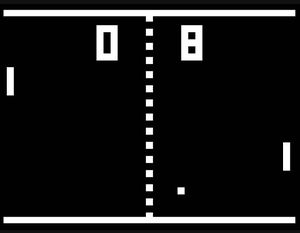Courses/Computer Science/CPSC 203/CPSC 203 Template/CPSC203 Template People/James King/Group 4
Phantom Renegades
Contents
Group Members
- Carin Eggertson
- Sumaya Habib
- Aneel Mattu
- Fredy Velarde
Introduction: How Online Anonymity Promotes Damaging Behavior To The Online Community.
The online games in today’s society have been growing at an alarming rate in size, capacity and interest. With the rise of technology and the ability to connect to others across the globe the task of communication is simple. With the idea that players are anonymous in their virtual worlds, their effects on social manners in promoting negative behaviour is based on the misconception that the offenders can’t be held accountable for their actions. Many companies have taken the objective to find and regulate the hostility that is found in many online environments. In other words, as players interact, they are given the opportunity to “rate” others accordingly, and this promotes an ideal virtual world with limited offensiveness.
Background Information
Brief History of Gaming
Within the past 30 years, video games have evolved from being a simple device (Cathode-ray Tube) to the X-Box’s and PlayStations we know today. In the 1960’s, the known computer games ran on huge university mainframes in the United States. The 1970’s brought the golden age of video arcade games to world. Such games included Space war, Pong, Space Invaders, and Asteroids. But the coloured game that was a favourite in the 1970-80’s was Pac-Man. With the first versions of home computers coming out such as the Tandy (TRS-80), the personal computer revolution began. The video game industry has transformed itself from simply experiments with technology into multi-billion dollar mammoth corporations. They have taken the world by storm coming from laboratories to our living rooms and video games are now part of our everyday lifestyles. With video games, comes the adventure of new and exciting fields of exploration, thus many games have moved from simply being able to play them, to being able to interact with other people across the globe. Also, with the ability to interact and communicate with people around the world 24/7, the possibilities are endless! With power comes great responsibility, thus some may abuse this power when interacting with others.
Development of Technology
Although at the beginning of gaming technology the development was quite slow, the improvements in the 1990’s were notable. In other words, we can say that if the1980s were the rise of video games, then the 1990s could be observed as matured mainstream form of entertainment.
In the early 90s, a new type of gaming system, Shareware, was introduced for smaller developers including then-fledgling companies such as Apogee, Epic Mega games, and id software. It offers customers to try the trial of the game, but restricted only the 1st portion of the game. Adventure games were started to improve with Sierra’s King’s Quest series, and LucasFilm's Monkey Island series had brought the graphical interaction and the idea of “point-and-click” game. The Sega Mega Drive, which is known in North America as the Sega Genesis, proved its value after its debut in 1989. Along with that, in 1991, Nintendo showed up with its own next generation system called Super NES. Sega also stretched the truth in its marketing approach by using the term Blast Processing to describe the simple fact that their console's CPU ran at a higher clock speed than that of the SNES.
From 1995, Sega introduced the Sega Saturn and Sony released a new game, PlayStation with gaming scenery. Another remarkable addition to the gaming technology includes Rare’s Nintendo 64 title GoldenEve007 in 1997. It was highly admired for being a very creative shooter game. It was the pioneer for certain features such as scopes, headshots, and objective based missions. The Legend of Zelda: Ocarina of Time (1998) was one of the examples of these kinds of games.
The latest decade has shown innovation on both consoles and Pcs. The most well-known example is Counter-Strike, released in 1999, which is still the most admired online first-person shooter of all time. Thus, game designers understood the prospective of methods and custom content to enhance the value of online games, and also to encourage the creation of newer games.
Rise of Online Gaming
Online gaming as we know it today started off as something researchers and scientists would compete against each other on university mainframe computers. During the early 70’s, the PLATO time sharing system was introduced to allow university students access to online lessons from several different places. However, this gave forth to students engineering multiplayer games on this system, something that is perceived as the earliest form of online interaction. Then, in the late 70’s, network host-based systems began to materialize, chief among them MUD, a multiplayer game for networked computers. This program later became available to a world-wide computer network during the late 80’s.
The technology and infrastructures for global interactivity continued to develop; the interest among gamers and researchers increased, and in turn more games and applications began to use these networking features. Finally, the turn of the 90s was the explosion of online gaming into mainstream status. With the advent of faster internet connections, the online gaming scene now escalated into a worldwide affair. With marquee titles such as Doom and Starcraft on the PC platform, online gaming surged onto the PC scene.
While PC gamers rejoiced in the competition on a global scene, the gamers on the console front, with lesser technological hardware, were still in the age of split-screen multiplayer. Online infrastructure for these consoles was attempted as early as the Atari with the ill-fated GameLine, and it wasn’t until Sega’s Dreamcast that a successful infrastructure was created. The rest of the sixth generation consoles released at a later time featured their own online components as well, chiefly Sony’s PS2 and Microsoft’s Xbox, the latter having a unified yearly-pay service. These consoles’ popularity catapulted online gaming in the console scene into an industry unto itself, and by the time the seventh generation of consoles rolled along, all three main competitors had dedicated online infrastructures available from the get-go. This explosion in online connectivity transcended into the handheld gaming systems, and now a myriad of titles on both Sony’s PSP and Nintendo’s DS can be played in a global scale.
However, dedicated online infrastructures lead to more than just global competition. On consoles and handhelds, online marketplaces have been established, where indie games, micro-transactions for extra functionality, and even movies and music have become available, transforming what used to be electronics strictly used for gaming into media centers.
Case Study
Effects
Online gaming has been publicized so far that it seems that it is totally spotless. It can create such a situation which let the players be addicted to only online players than real friends. “Electronic relationships might be preferable to more difficult, close interpersonal relationships (Sheff 112).” It results in anti-social environment. Other possible negative effect of online gaming is that for being extremely competitive, one becomes highly engaged in the contest, and obsession may set in, leading to isolate from family and society.
One of the most common characteristics of online gaming is that it allows anonymity which works for the disinhibition effect. When unknown players have the opportunity to separate their actions from their real world and identity, they express themselves more openly and spill out rude language and harsh criticisms, anger, hatred, even threats. Countless teens play online games and are encouraged to use trash words which they absorb from anonymous players. With all personalities, one can find that people may create their own fake personas. This creates a second life with online community, allowing them to recreate themselves into whatever they prefer. This can cause positive and very negative effect.
Online anonymity promotes players to believe in imaginary characters which they create. They split online fiction from offline fact. An extreme version of personality dynamics occurs in a multiple personality disorder, in which consciousness shifts laterally from one constellation of personality formation to another, with strong dissociative barriers between those formations.
While online players feel they have more chances to present themselves as they always have tried to show, particularly they may have more chances to convey thoughts and emotions that go "deeper" than the seemingly superficial persona of everyday living. If anonymity eliminates people's concern then they are more comfortable to articulate themselves. Important personality dynamics are embedded in that anxiety. People who are shy in-person may thrive in cyberspace when the disinhibition effect allows them to express who they "truly" are inside. This is a wonderful opportunity for them.
Examples
With online gaming, the thrill of playing and meeting people around the globe is a real thrill. The fun of the thrill is that you are competing not with the computer, or play system, but with real people. Communication between gamers can become violent and create “trash talking” when competition for a goal is introduced. Online with X-Box live, you can see the effect of this. If users quite games early due to trash talking, or violence (not just the game) but with the voice and aggression towards other players this can and has become an issue. Many companies, like Bungie is doing for Halo, is allowing for players to rank themselves. This shows that people are able to be held responsible for their actions, unlike in the past when this wouldn’t have been possible. Bungie is actually able to suspend Halo X-BoxLive accounts due to the number of complents. So this is one step that companies are taking to reduce the trash talking and negative effects of peoples attitudes towards others.
Statistics
- The average age of a gamer is 33 and 25% are older than 50
- 1/3 of all gamers are now females
- 35% of households own a gaming console
- 67% of gamers use a PC, 19% use a portable system (Nitendo DS, PSP, etc.), 14% use a console (X-Box, PlayStation, Wii, etc.)
- 41% of kids are buying games without the permission of their parents
- 56% of online gamers are male, while only 44% are female
- 63% of parents believe that the games are useful for their child
- Several authorities including the US Surgeon General say that there is no link between violent activities and violence in video games
- Game consoles totalled 6.6 billion dollars in sales in 2007 with 153 million units sold
- Computer game totalled 910 million dollars in sales with 36 million units sold
- Nine games were sold a second in the USA during 2007
Conclusion
With the explosive growth of the online scene, gaming was brought into a global scene. However, as with any new feature there is always a caveat: online’s anonymity invites unwanted and even obscene behaviour from people in its community, potentially souring what would otherwise be a great experience. Fortunately, measures have and continue to be taken towards a friendlier atmosphere. Not only does this prevent any unwanted consequence, but as with any area of society, respect and fair-play are primordial to progress.
References
- http://www.pcgamepoint.com/pcgames-articles/pc-multiplayer-games.htm
- http://www.tharsis-gate.org/articles/imaginary/HISTOR~1.HTM
- http://www.mysocialnetwork.net/blog/410/t11/2006/11/the_story_of_online_gaming_its_effects_on_childhood.html
- http://www.units.muohio.edu/psybersite/cyberspace/onlinegames/negative.shtml
- http://www-usr.rider.edu/~suler/psycyber/disinhibit.html
- http://www.futurelooks.com/354-Ten-Video-Gaming-Statistics---Are-You-One-Of-Them-.html
- http://www.theesa.com/facts/gameplayer.asp
- http://www.theesa.com/facts/violence.asp
- http://www.theesa.com/facts/salesandgenre.asp
- http://www.helium.com/items/307988-gaming-trends-online-gaming
- http://www.xbox.com/en-US/community/personality/elle/20060814-shoptilyoudrop.htm
- http://thinkofit.com/plato/dwplato.htm
- http://www.guardian.co.uk/technology/gamesblog/2007/jul/17/idcloseworld


